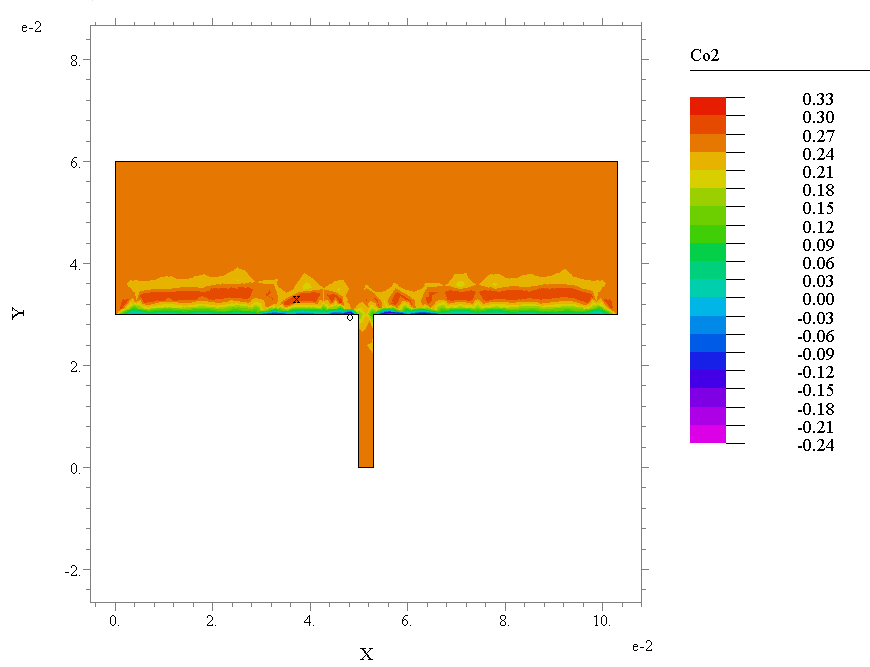| Author | Message | ||
Yasuo Hira (jun) Member Username: jun Post Number: 5 Registered: 12-2007 |
Dear all, Ifm dealing with time-dependent problem. Among the result (shown in attached file), there is minus value that should not be minus, such as concentration of chemical species. I want know the reason and how to avoid it (of course general discussion is O.K.). Does someone have same result?  | ||
Robert G. Nelson (rgnelson) Moderator Username: rgnelson Post Number: 1013 Registered: 06-2003 |
FlexPDE computes a numerical approximation to the solution of a PDE system, not the analytic solution. The finite element method approximates the solution as a patchwork of polynomial segments (quadratic by default in FlexPDE). Shapes that cannot be fit by polynomials over the mesh cells will produce ringing (overshoot and undershoot). In particular, step functions cannot be represented by polynomial patches at any scale. So you will always see overshoot in trying to model a step function. You can limit the range of the overshoot by specifying a dense mesh at the discontinuity. Better yet, don't specify discontinuous initial conditions. They are non-physical anyway, since there is no practical way to start a system out with discontinuous values. This issue is related to Gibbs phenomena in Fourier analysis. A step function requires an infinite number of Fourier components to represent it. If you truncate the Fourier series at a finite number of terms, you will get ringing and overshoot. This is not a catastrophic problem, as FlexPDE balances fluxes across cell interfaces and will conserve energy or mass in spite of occasional overshoots in the interpolated values. FlexPDE incorporates a mesh refinement procedure to automatically refine the mesh in the region of discontinuous initial values, and to smooth the initial values before beginning the run. Nevertheless, you will always see some ringing in early times, until the discontinuity smooths out in response to the action of the PDE. | ||
Yasuo Hira (jun) Member Username: jun Post Number: 6 Registered: 12-2007 |
Dear Mr. Nelson According to your advice, it seems if I increase mesh number and make it finer it helps to reduce this problem. I'll try after reading manual. Thank you very much for your support. |